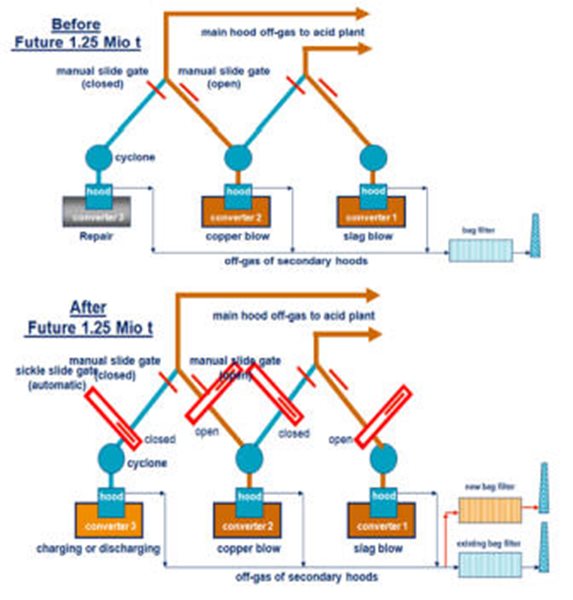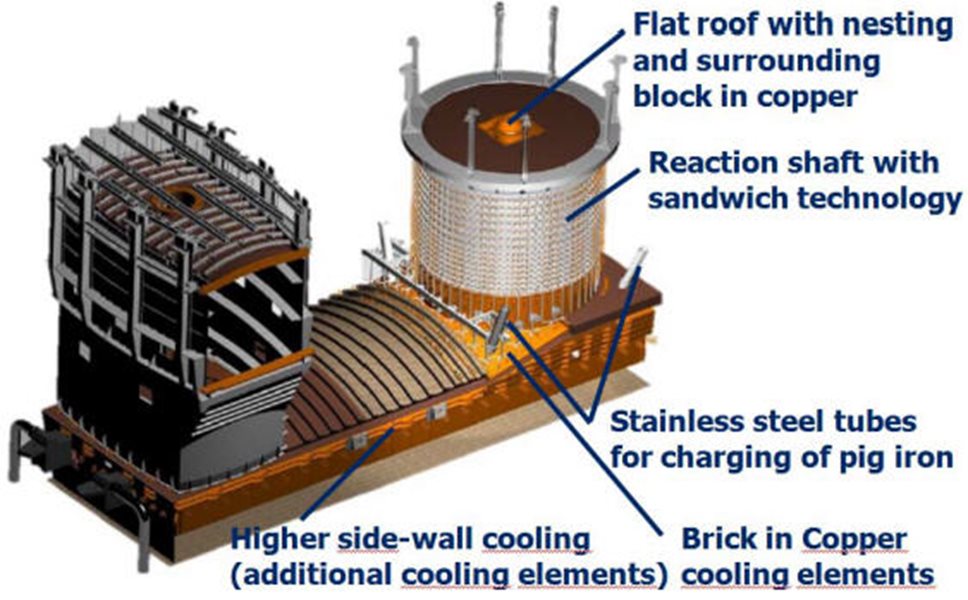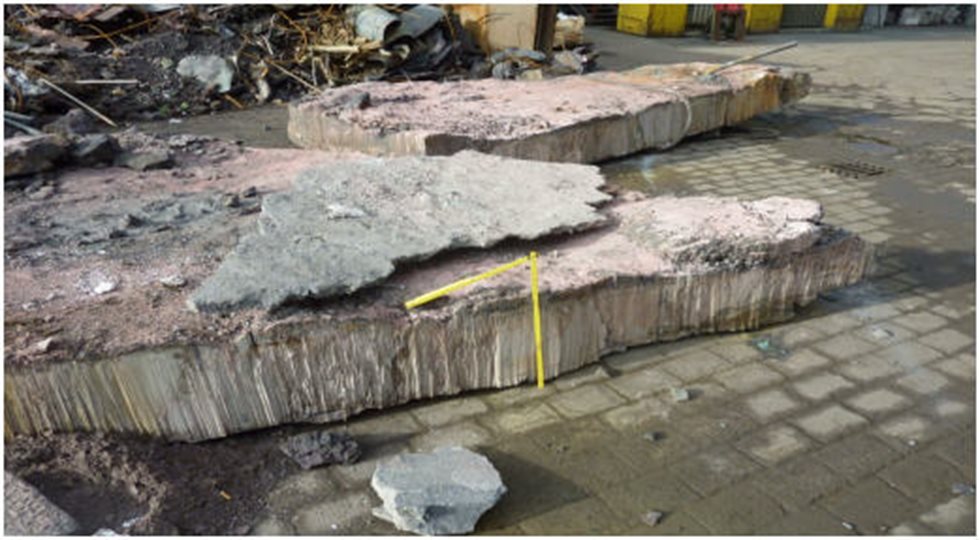Project “Future 1.25 Mio t”
In 2007 the smelter set-up was analyzed with regard to a further increase of concentrate processing capacity. Different expansion options were evaluated. The realized expansion project concept “Future 1,25 Mio. t” increased the budget smelter capacity from 1,15Mio t. to 1,25 Mio t without new furnaces, but with a higher utilization of existing units. A total investment of 40 Mio € compasses:
- substitution of lead-cells with polymer-concrete cells in tankhouse
- constant utilization of acid plant
- changes in off-gas system of PS-converters
- additional auxiliary hoods filter (bag filter with lime addition)
Changes in the PS-converter off-gas system enabled a three-hot-two-blowing mode operation which was the core project for an overall increase of production. This three-hot-two-blowing mode increases production capacity due to the elimination of the idle time between consecutive converter blows. It is possible because the off-gas line manual slide gates were replaced with automatic sickle slide gates allowing switching the off-gas treatment between the converters. Now the second blowing coverter could be operated immediately after the end of the finished converter batch thus increasing the production capacity.


